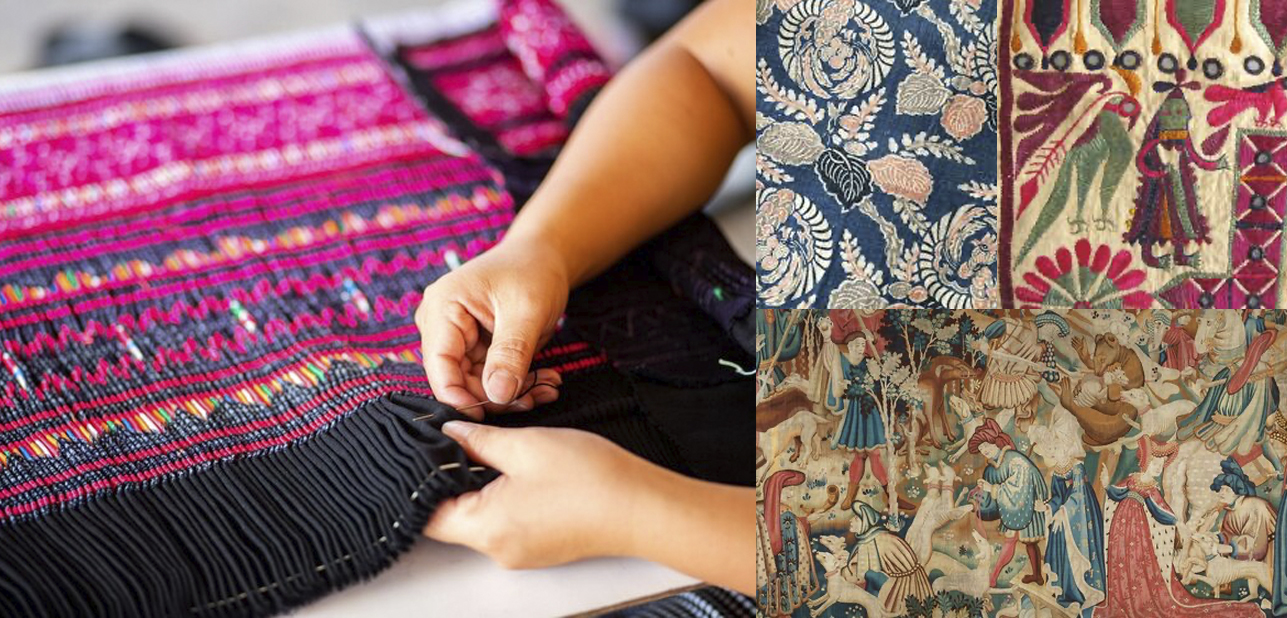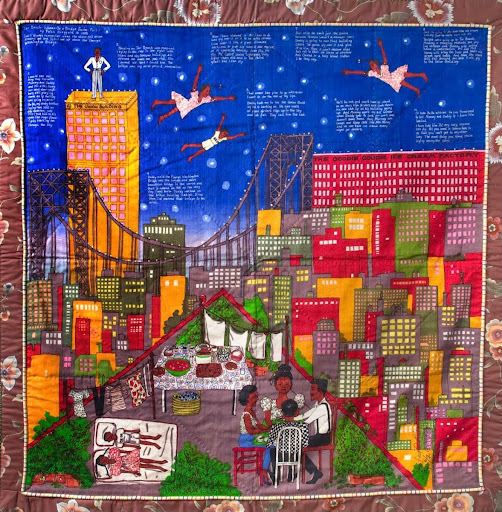Quilting can go beyond fabric and thread. It’s a way to tell textile stories that capture history, emotions, and culture. How does fiber art transform into a narrative? Quilts and textiles have long conveyed deeper meanings, from personal memories to symbols of cultural identity. We’ll explore the significance of fiber art as a medium for storytelling, how it expresses emotions, and its role in cultural narratives. Carolina Oneto, our mentor in the quilting world, will guide you through techniques that help you create your own meaningful quilt designs, turning fabric into a voice for your stories.
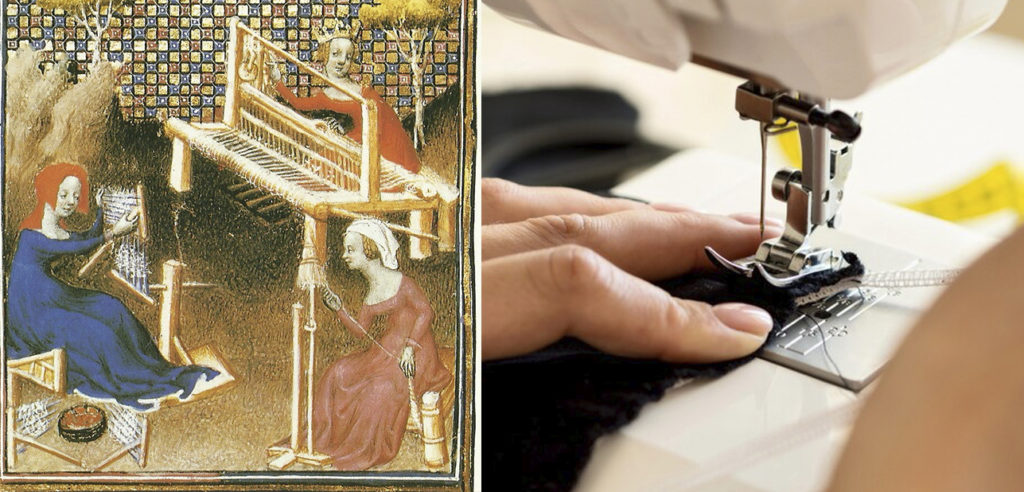
Historical Fiber Art: Weaving the Past into Fabric
Throughout history, textiles have told the stories of societies and cultures. One of the most famous examples is the Bayeux Tapestry from the 11th century, which depicts the Norman Conquest of England. This detailed embroidery, nearly 70 meters long, portrays vivid battle scenes and significant figures. It was not only a work of art but also a tool for shaping the political narrative of the time.
Ancient Peruvian textiles, such as the Paracas Textile, offer another glimpse into how fiber art served as a cultural record. These textiles often depicted mythological figures and spiritual beliefs, used in ceremonial contexts, embedding the cultural stories of ancient societies.



Textiles as Cultural Symbols: Crafting Identity Through Fabric
Textiles have long served as cultural symbols, offering insight into the values and beliefs of various societies. Persian carpets from the Safavid period are prime examples, showcasing intricate designs that symbolize Persian culture. Woven textiles were not just decorative; they conveyed stories about local flora, fauna, and cultural exchanges.
Similarly, Japanese kimonos from the Edo period incorporated symbolic motifs, such as cherry blossoms and cranes. These garments weren’t just worn—they signified the wearer’s social status and cultural identity. Such textiles were passed down through generations, keeping cultural history alive.
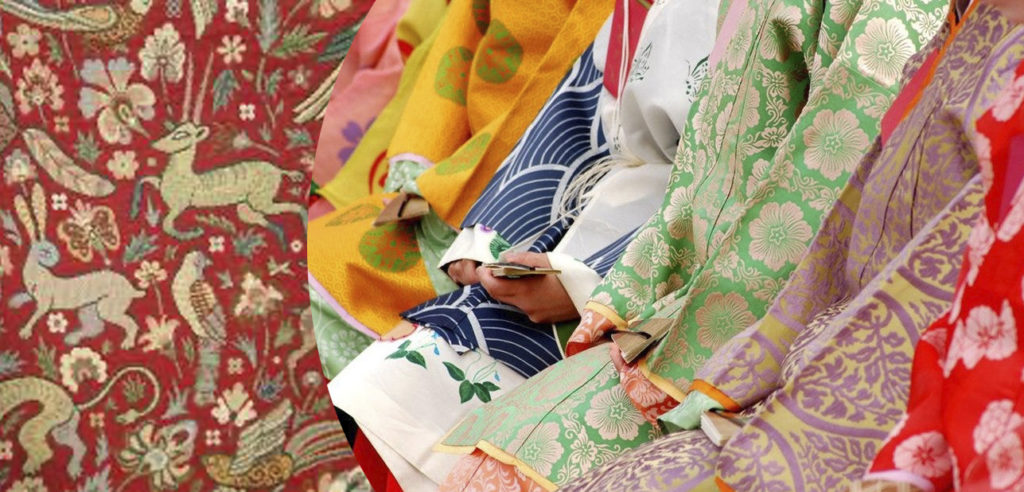
Emotional Expression Through Fiber Art: Weaving Feelings into Fabric
Fiber art is also an emotional outlet for many artists. Hannah Ryggen’s political tapestries stand as powerful examples, such as her piece “6 October 1942,” which portrays the horrors of the Nazi occupation in Norway. Through her work, Ryggen expressed both personal grief and political resistance, using fibers to create emotionally charged stories.
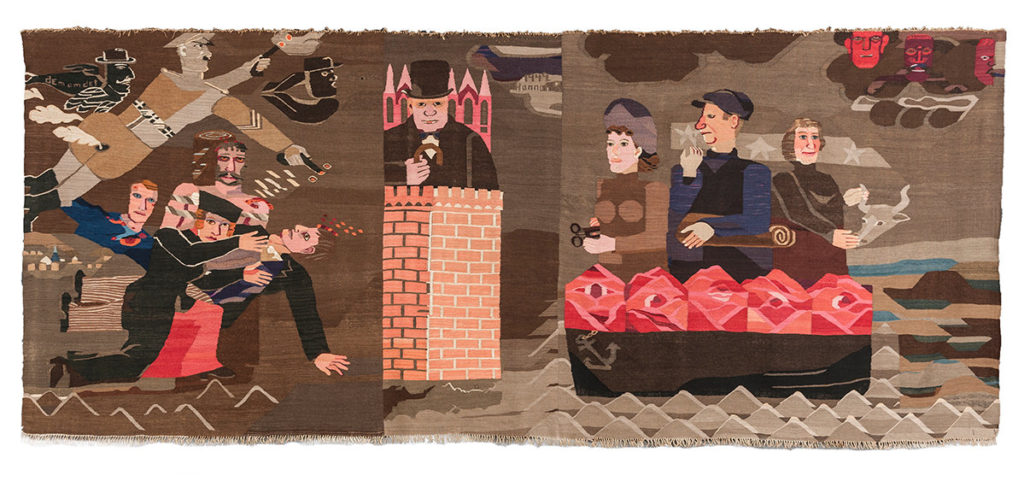
The quilts from the Gee’s Bend community in Alabama are another form of emotional storytelling. The asymmetrical patterns and bold colors used in these quilts reflect the history, struggles, and resilience of African American women, preserving their life experiences through fabric.
Feminist Movements in Fiber Art: Reclaiming the Domestic Craft
Feminist movements in the 20th century elevated fiber art as a legitimate medium of artistic expression. Judy Chicago’s “The Dinner Party” (1979) is a monumental work that celebrates women’s contributions throughout history, using embroidery and ceramics. This textile work helped challenge the traditional view that needlework belonged only in the domestic sphere.
Faith Ringgold’s quilts blend vibrant storytelling with feminist ideologies. Her quilt “Tar Beach” portrays life in Harlem, connecting African American history with feminist commentary. Both artists have used fiber art to push boundaries and make political statements.
Contemporary Storytelling with Fiber Art: Modern Voices through Fabric
Contemporary fiber artists continue to use textiles as a medium for storytelling, often addressing social and political themes. Tanya Aguiñiga’s border-themed textiles highlight the US-Mexico border crisis, blending traditional Mexican weaving techniques with modern political commentary. These textiles become symbols of survival and cultural resistance.
Nick Cave’s “Soundsuits” is another example of contemporary fiber art that tells stories of struggle and identity. These wearable textile sculptures were created in response to racial violence, using sound and movement to convey deep emotions. Through such work, modern artists continue to show how fiber art remains an informative, evocative, and artistic tool.
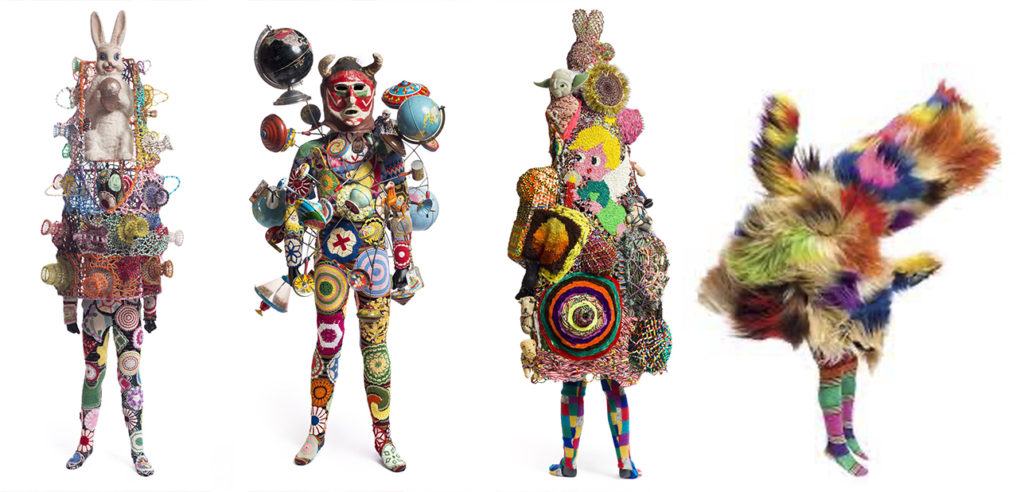
Cross-Cultural Storytelling Through Textiles: Bridging Global Narratives
Fiber art has the power to bridge cultural divides, as seen in the “Storytelling through Textiles” project between Kazakhstan and the USA. This exchange of quilting and eco-printing techniques allowed artists to share cultural narratives, emphasizing common values between distant regions. For example, Kazakh patchwork quilts use symbolic shapes and colors to represent blessings and good fortune, connecting generations through the fabric. Projects like this show that fiber art is not just a personal expression—it is also a way for cultures to communicate, learn, and share stories with one another.
Textile Art as Memory Keepers: Preserving Personal and Cultural Histories
Textile art often serves as a keeper of memories. In American history, pioneer quilts made from repurposed fabric held the personal stories of the families who created them. These quilts became family heirlooms, passed down from generation to generation, each patch representing a piece of personal history.
Similarly, the quilts of Gee’s Bend document the life stories of African American women in the Deep South. Through their quilting, they preserved their experiences, struggles, and triumphs, especially during periods of slavery and the civil rights movement.
Religious Narratives in Textile Art: Stitching Spiritual Stories
Textile art also conveys religious narratives and spiritual beliefs. Byzantine vestments and religious garments are prime examples of how textiles were used to communicate Christian teachings visually. These ceremonial garments, intricately embroidered with symbols like crosses and saints, conveyed moral and spiritual lessons without words.


In Islamic cultures, embroidery and woven textiles often feature calligraphy and geometric patterns, telling stories of faith and spirituality. Contemporary artists like Farwa Moladina continue this tradition, using fabric and thread to explore Muslim female identity and spirituality in a modern context.
Symbolism and Political Commentary in Fiber Art: Messages Woven in Fabric
Christo and Jeanne-Claude’s “Wrapped Reichstag” (1995) was a temporary installation that used fabric to symbolize Germany’s reunification. This large-scale textile work blurred the lines between architecture and fiber art, showing how fabric can make strong political statements on a global scale.
Tactile and Sensory Engagement in Fiber Art: Touching Stories through Fabric
The tactile nature of fiber art invites viewers to engage with it on a sensory level. Anni Albers’ woven works focused on the texture of textiles, encouraging viewers to experience the materiality of the art. Her geometric designs and choice of materials invited a physical interaction with the fabric, adding another layer to the storytelling.
Louise Bourgeois used fabric in her textile sculptures, creating intimate, tactile installations that evoked emotional responses. Through touch, fiber art creates a deeper connection between the viewer and the story being told.
Learn from Carolina Oneto: Mastering the Art of Quilting
Carolina Oneto is a modern quilter with extensive experience. Her approach blends traditional quilting techniques with bold, contemporary designs. She offers workshops, on-demand classes, and one-on-one sessions tailored to every skill level. Carolina focuses on color theory, improvisation, and transparency, helping quilters build their own unique textile stories.
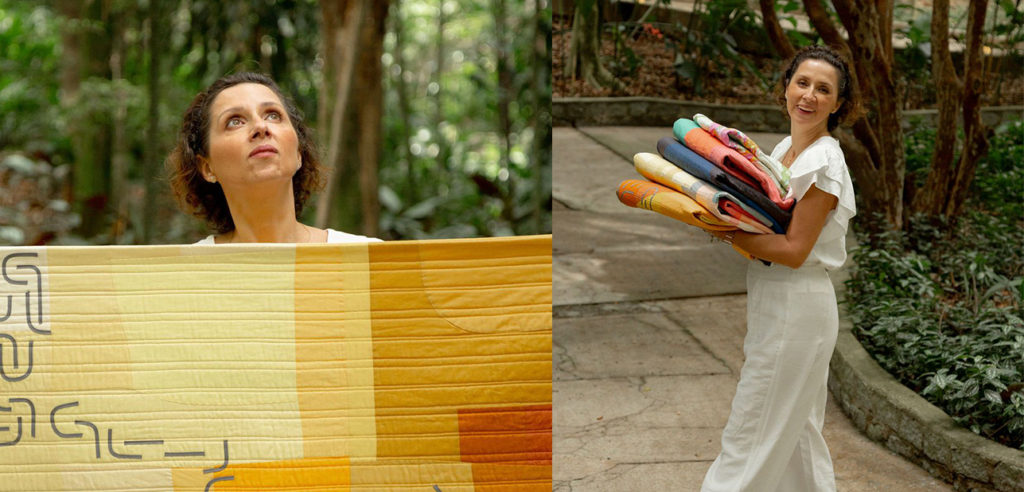
- Engaging Workshops and Classes
Carolina offers a variety of classes, including Befriending Colors and Creative Improv Piecing. Each class is designed to teach essential quilting skills while inspiring creativity. Her interactive live workshops allow participants to learn in real time, fostering a hands-on learning experience.
- Personalized Guidance for Quilters
Carolina also offers individual meetings where she provides tailored advice on specific projects. Her sessions encourage personal growth and creative exploration. She emphasizes the importance of building meaningful textile stories through your work.
- A Passion for Teaching Fiber Art
Carolina’s teaching style is clear, engaging, and supportive. Her commitment to her students’ growth is evident in her detailed demonstrations and personalized feedback. She ensures each student leaves with the knowledge and confidence to create their own quilted stories.
If you want to learn how to create your own textile stories, contact us today to join one of Carolina’s enriching classes or workshops.


